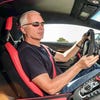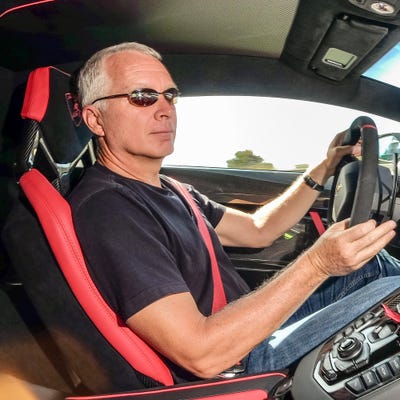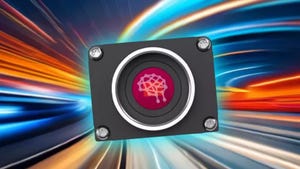Chrysler Halcyon Concept Showcases Lithium-Sulfur Batteries
Chrysler’s sleek concept car employs batteries with double the energy density of lithium-ion with none of the troublesome ingredients.
.gif?width=850&auto=webp&quality=95&format=jpg&disable=upscale)
At a Glance
- Innovative lithium-sulfur batteries
- Dynamic Wireless Power Transfer technology
The Chrysler Halcyon concept car forecasts a halcyon future where batteries are amazingly energy-dense and free of problematic rare-earth elements. It features the Lyten 800-volt lithium-sulfur EV battery that doesn’t use nickel, cobalt, or manganese. Chrysler parent Stellantis invested in Lyten in May 2023 and this an the early dividend of that.
Lyten claims an estimated 60 percent lower carbon footprint than today’s best-in-class batteries, but cost and range are the parameters that matter to drivers. Fortunately, the Halcyon’s Lyten battery promises double the energy density of today’s lithium-ion cells. Even better, lithium-sulfur has the potential for 5-10 times more energy than the latest lithium-ion batteries at a much lower cost, according to a report from UCLA researchers.
Lyten’s lithium-sulfur battery uses the company’s proprietary 3D graphene, which it says is “orders of magnitude more chemically and electrically reactive” than 2-dimensional graphene. The company says the 3D graphene addresses the polysulfide shuttle challenges that are typically associated with the use of sulfur.
This produces a battery with more than twice the energy density, with the obvious benefit of a longer driving range. The absence of nickel or cobalt frees the Halcyon from supply chain risks and environmentally unsound mining issues associated with nickel-manganese-cobalt (NMC) oxide materials.
“Among the automotive product innovations being transformed by Lyten 3D Graphene are lithium-sulfur batteries with the potential to deliver more than twice the energy density of lithium-ion, payload-improving lightweighted vehicle composites, and new modes of sensing that do not require chips, batteries or wires,” stated Dan Cook, president, and CEO of Lyten.
“Unlike two-dimensional forms of graphene, the production of our tunable Lyten 3D Graphene has been independently verified to be carbon neutral at scale,” he added. “We are converting greenhouse gases into a new class of high-performance, high-value carbon materials and are incorporating these tuned materials into applications that will decarbonize the hardest to abate sectors on the planet.”
The Halcyon is built on the Stellantis SLA Large EV platform. It is only a concept, but Chrysler says it will introduce its first battery-electric model in 2025 and will convert to an all-EV product line by 2028.
The concept car also shows off upcoming Stellantis technologies, such as STLA Brain, STLA SmartCockpit display, and STLA AutoDrive Level 4 autonomous driving technology. These are wrapped in an eye-catching package that boasts a butterfly-hinged canopy and what Chrysler describes as “red-carpet-style side doors.” In a nod to the Chrysler Pacifica minivan, the Halcyon’s rear seats retract into the trunk area in a future translation of the Pacifica’s folding Stow ‘n Go seating.
In place of a conventional instrument panel, Halcyon features a cross-car pillar-to-pillar transparent display, a stowable 15.6-inch console screen that can be rotated for either portrait or landscape orientation, and an augmented-reality full-screen head-up display (HUD) that shares important driving information, such as speed, charge status and more.
To address concerns about charging time on long-distance drives, the Halcyon plans for a future that includes Dynamic Wireless Power Transfer (DWPT) technology to wirelessly recharge electric vehicles in motion. When DWPT cars drive on specially equipped, dedicated road lanes, they can charge continuously, which allows for unlimited range without the need for a charger, charge cord, or charge stations.
DWPT is still conceptual at this point, but that is the purpose of concept cars, right? We will see Chrysler’s more concrete EV plans soon enough, based on its 2025 deadline. Maybe that vehicle will even include innovative lithium-sulfur battery cells.
About the Author(s)
You May Also Like





